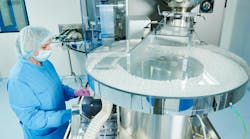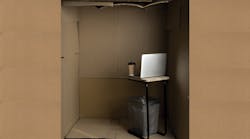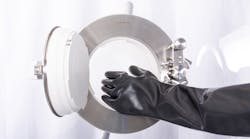As aseptic manufacturing technologies and practices evolve, and drugmakers simultaneously look to bring advanced therapeutics to market, cleanroom needs are changing. Ultimately, drugmakers face a complex list of considerations when it comes to the design, build, qualification, and operation of cleanrooms.
It's a wide-ranging and important topic, and Pharma Manufacturing tackled it during a recent panel discussion featuring Ravi Samavedam, chief innovative officer, Azzur Group; Mitch Gonzales, vice president process technology, AES Clean Technology; and moderator Christine Craig, microbiology consultant, ValSource.
Here is a glance at some takeaways from the discussion:
The long-awaited revised EU Annex 1 requirements were published this past summer and take effect in August 2023. One big question manufacturers of sterile drugs have is whether cleaning programs need to be reassessed or approached differently as part of the overall contamination control strategy in light of the new Annex 1 issuance.
Mitch Gonzales: It really depends on the robustness of the existing program that you had and how you qualified the facility. But generally, they should always be being in a state of reassessment, not necessarily induced by Annex 1 or any type of compliance upgrade. There should be a program of evaluation which should start off with a formal qualification of the facility in terms of characterizing particles and contamination at the initiation. But what is expected over time is that the area and the critical zones are characterized with respect to what types of contamination have they been seeing, airborne or surface, etc., and that this is understood on a regular basis (whether quarterly, biannual) and the proper cleaning program has been applied, including the proper use and application of disinfectants and cleaning agents.
That's a big change in the Annex 1. The differences between acquired and innate disinfection is an ongoing conversation, but basically there needs to be a greater understanding of that cleaning and characterization of the types of products and how tough they are — which would dictate the cleaning frequency.
Some type of data is needed as the basis of all decisions — how frequently cleaning is done, how often testing is done, how much re-qualification needs to be done, and what maintenance needs to be done during shutdown.
Ravi Samavedam: The one major difference in this Annex 1 revision is the formality of the quality risk management process and the requirement for a contamination control strategy. In order to implement that, companies by default will have to look at their existing processes holistically. No longer is it a one-off — you need to look at the entire facility in order to build a contamination control strategy holistically.
By default, companies will have to look at their existing cleaning procedures and not just asking ‘does it clean my cleanroom appropriately,’ but also evaluating the incoming load of contaminants and whether or not the disinfectant is actually appropriate. Do you have the evidence to prove that? And are you doing it based on a on a risk-based methodology rather than just doing it based on anecdotal evidence or past experience?
Q: Recently, there has been a proliferation of sterile manufacturing technologies and methods in the cleanroom space. What has caught the eye of the industry?
Ravi Samavedam: In terms of technologies, single use technologies have exploded in the last two decades. About 20 years ago, when I was at Amgen, we were one of the first to start using buffer bags for biomanufacturing. But nowadays, the majority of the process containers, especially for cell and gene, are single use disposable bags. So there's a lot of technological advances in terms of how to connect these process containers with minimal risk of contamination — how to do it in an ISO 7 space, but still be able to connect process equipment.
There's also advances in terms of cleanroom panels themselves. In general, the industry is moving to modular construction-based cleanrooms more so than traditional stick-built cleanrooms — that's definitely a pattern that we are seeing. Because of that demand, we are seeing a lot of advances in modular panel-based cleanroom technologies.
Mitch Gonzales: Modular is definitely one of those advances in terms of the material context. The conventional way of building a cleanroom is to use drywall. We affectionately call it dry mold. It creates dust. It's not a fit for purpose, it was never intended for that. We now have materials that use modular, which are manmade materials like metal and PVC that are impervious to the cleaning disinfectants, have a much longer life and are intended for these environments. They have very round corner pieces. There are no 90 degrees in the room anymore. They're designed to mate with flooring systems and coating that are monolithic in nature. A great deal of technology has advanced in the cleanroom if you go modular construction.
Another area of advancement is automation and equipment. Even isolators have come a long way —how they enter and exit materials, portals, the level of sophistication of robotics and their continuity and robustness to continually move with very little interaction other than setup.
I'll give you an example of that —feeder bowls. Feeder bowls are the enemy inside the isolator because you have to remove them and put them in autoclaves. And when you put them back in, it's very difficult to tune them to move plungers or stoppers to whatever you're moving into the right area, simply because they have to be retuned. Well, now you don’t need to do that anymore. Not only because the technology of the mechanisms are better, but also because the sterilization techniques are better. You've got vapor hydrogen peroxide. You also have ethylene oxide. There are other techniques and advances that further keep people out of the area.
>>>>>Want to hear more? View the entire panel discussion here





